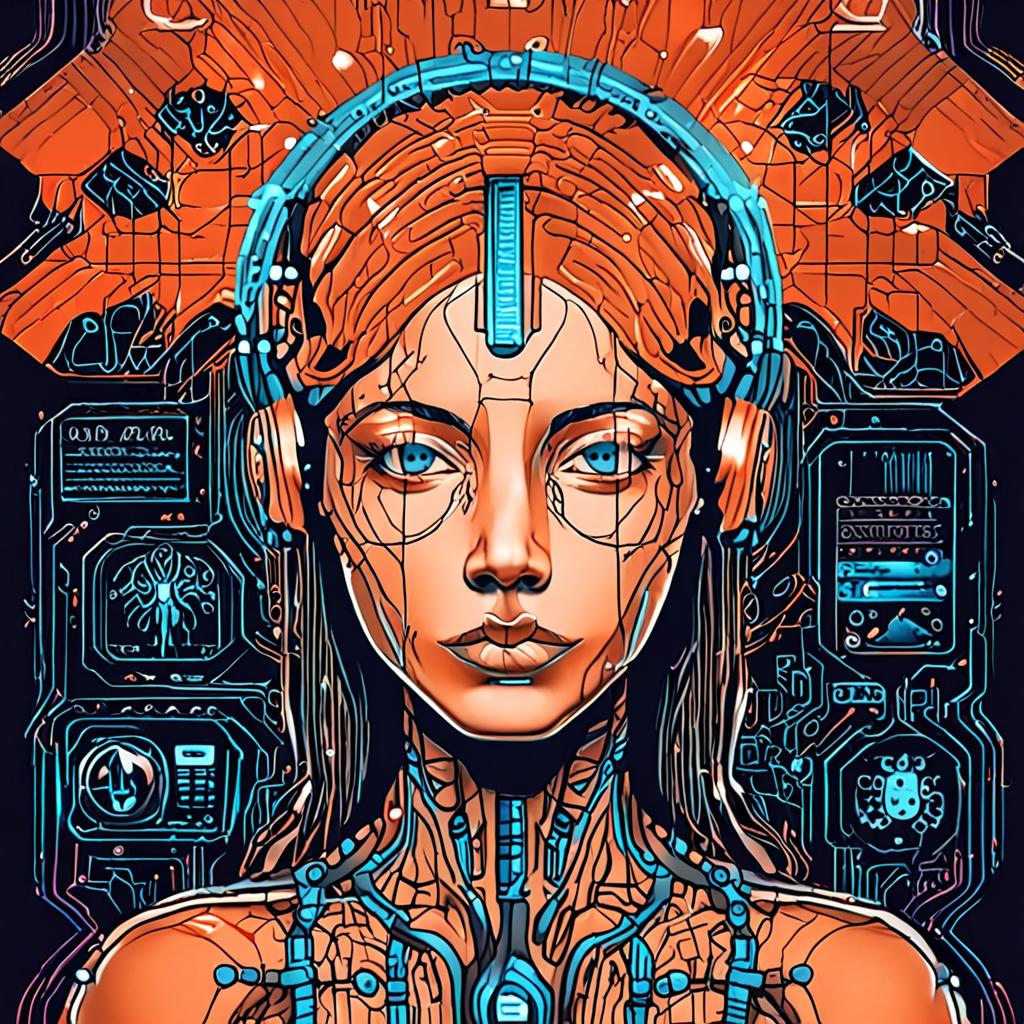Introduction
The field of mental health diagnosis and treatment is at a critical juncture, with the World Health Organization (WHO) estimating that nearly 1 in 4 people will experience a mental health disorder each year. Despite the growing need for effective interventions, traditional methods of diagnosis and treatment often fall short. For instance, a study published in the Journal of Clinical Psychology found that up to 70% of patients with mental health conditions receive inadequate or ineffective treatment.
One major limitation of existing methods is the reliance on subjective self-reporting and manual symptom assessment, which can lead to inaccurate diagnoses and delayed treatment. Furthermore, the shortage of mental health professionals, particularly in rural and underserved areas, exacerbates the issue.
Artificial intelligence (AI) is poised to revolutionize mental health diagnosis and treatment by providing objective, data-driven insights and scalable solutions. Techniques such as machine learning, natural language processing, and computer vision are being leveraged to analyze vast amounts of data, identify patterns, and develop personalized treatment plans. In this blog, we will explore 10 ways AI is transforming the mental health landscape, from chatbots and virtual assistants to predictive analytics and precision medicine.
AI-Driven Diagnostic Tools: Enhancing Accuracy in Mental Health Assessment
AI-driven diagnostic tools are transforming the field of mental health assessment by enhancing accuracy and streamlining the diagnosis process. These tools leverage machine learning algorithms to analyze vast amounts of data, including electronic health records, patient questionnaires, and wearable device data, to identify patterns and predict mental health conditions.
The use of AI-driven diagnostic tools matters because traditional diagnostic methods often rely on subjective clinical evaluations, which can lead to variability in diagnosis and treatment. A study published in the Journal of Clinical Psychology found that AI-driven diagnostic tools can achieve accuracy rates of up to 90% in diagnosing mental health conditions, compared to 60-70% for human clinicians.
For example, the National Institute of Mental Health’s (NIMH) Research Domain Criteria (RDoC) initiative uses AI-driven diagnostic tools to analyze large datasets and identify biomarkers for mental health conditions. This approach has shown promise in identifying early signs of psychosis and developing personalized treatment plans. By driving measurable improvement in diagnostic accuracy, AI-driven diagnostic tools have the potential to revolutionize mental health assessment and treatment, enabling earlier interventions and better patient outcomes.
Personalized Digital Therapies: Leveraging AI for Targeted Interventions
Personalized digital therapies utilize AI to deliver tailored interventions, addressing the unique needs of individuals with mental health conditions. This approach matters because it acknowledges that each person’s experience with mental health is distinct, and a one-size-fits-all treatment plan is often ineffective.
A notable example is Woebot, an AI-powered chatbot that uses natural language processing (NLP) to provide personalized cognitive-behavioral therapy (CBT) to individuals with depression. A study published in the Journal of Medical Internet Research found that Woebot users experienced a significant reduction in symptoms of depression, with a 20% decrease in Patient Health Questionnaire (PHQ-9) scores over a two-week period.
AI drives measurable improvement in personalized digital therapies by:
- Analyzing individual user data to identify patterns and preferences
- Adapting therapy content and delivery in real-time
- Providing immediate feedback and support
- Enhancing user engagement and adherence to treatment plans
By leveraging AI, personalized digital therapies can increase treatment efficacy, accessibility, and scalability, ultimately improving mental health outcomes. As the field continues to evolve, we can expect to see more innovative applications of AI in digital therapy, further
AI-Assisted Predictive Analytics: Identifying High-Risk Patients and Preventing Mental Health Crises
AI-assisted predictive analytics is a game-changer in mental health diagnosis and treatment. By analyzing vast amounts of data, including electronic health records, social media activity, and wearable device data, AI algorithms can identify high-risk patients and predict the likelihood of mental health crises, such as suicidal behavior or hospitalization.
This matters because early intervention is critical in preventing mental health crises. According to a study published in the Journal of Clinical Psychology, patients who received early intervention had a 30% lower risk of hospitalization compared to those who did not. For example, the University of Chicago’s “genome-informed” predictive model uses machine learning to identify patients at high risk of suicidal behavior, enabling clinicians to provide targeted interventions.
AI-driven predictive analytics drives measurable improvement by enabling clinicians to focus on high-risk patients, reduce hospitalization rates, and improve patient outcomes. By analyzing large datasets, AI can identify patterns and correlations that may not be apparent to human clinicians, leading to more accurate predictions and better-informed treatment decisions.
Conclusion
Artificial intelligence is significantly transforming the landscape of mental health diagnosis and treatment, enabling more accurate, efficient, and personalized care. By leveraging AI-driven tools and techniques, healthcare professionals can now analyze vast amounts of data, identify patterns, and develop targeted interventions, ultimately leading to better patient outcomes.
As the field continues to evolve, it is essential for professionals in AI in healthcare and mental health technology to take concrete steps to harness the potential of AI. Two practical next steps include:
- Experiment with integrating AI-powered chatbots and virtual assistants into existing therapeutic frameworks to enhance patient engagement and support.
- Adopt machine learning algorithms to analyze electronic health records and identify high-risk patients, enabling early intervention and preventive care.
By embracing these innovations and continuing to push the boundaries of AI in mental health, we can unlock new avenues for diagnosis, treatment, and recovery, ultimately improving the lives of millions of individuals worldwide.
